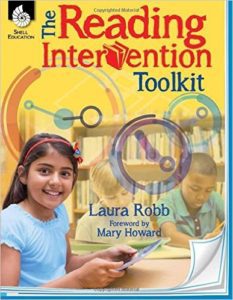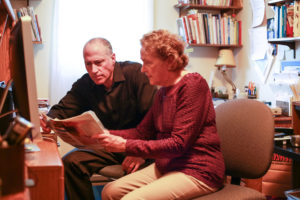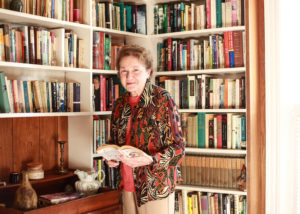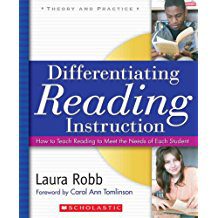Let Students’ Questions Define Your Classroom
By Laura Robb
The practice of asking questions to drive students’ learning is alive and well in schools today. But here’s the rub! Too often questioning is recitation where the teacher prompts students for the “one right answer” to questions she has developed. Moreover, at school, who should be posing the questions? To foster independent readers and thinkers, students need to be in the driver’s seat when it comes to asking and answering questions. If teachers always control questioning, then student learning is greatly diminished because students aren’t discussing ideas that have relevance to them.
On the other hand, when quality, student-generated questions define a class, meaningful learning takes place—learning that defines reading, research, collaborative projects, literary discussions, and units of study. As students wonder and question and use their questions to learn, they develop the ability to raise questions while reading. This keeps them focused on a text, but also motivates them to read on to find answers to their queries.
When Do Students Ask Questions?
Opportunities abound throughout the day for students to pose questions. Here are a few:
Mini-lessons: Invite students to jot down questions they have while you present a mini-lesson and ask these when you’ve finished. Such questions clarify students’ understanding and help them absorb new ideas. However, students’ questions can offer you insights into what they do and don’t understand. With this information, you can design interventions based on observed needs.
A daily teacher read aloud: Frequently, students pose questions about a conflict, theme, or how events connect. Reserving a few minutes for students to ask their questions shows them how much you value their thinking and provides you with insights into ways students react to the text.
Setting goals: Help students understand that raising two questions such as, Is there a strategy I should work on next? What do I have to do to reach this goal?” can improve their learning. Such questions develop independence because they place students in charge of decision-making.
Self-evaluation: Questions can also drive students’ evaluation of their work over time, such as reviewing several journal entries in their notebooks, the entire process for a piece of writing, several quizzes and test grades, or their participation in collaborative projects. Here’s a sampling of questions that students might ask: Did I improve? How do I know I made progress? Is there something I did that stands out? Did I struggle? How? What did I do to cope with my struggles?
A result of self-evaluative questions is the development of metacognition, the ability of students to reflect on their written work, collaborations, and learning to improve critical thinking and problem-solving.
Close reading: Isabel Beck and Margaret G. McKeown’s strategy, questioning the author, provides students with questions for fiction and nonfiction texts. The questions help students link words, phrases, and ideas to construct meaning from a passage they find challenging. While close reading, the student might ask: Why did the author use that word or phrase? How does the word or phrase connect to the information in the sentence? To information that came before the sentence? How does the paragraph or section connect to the title? The theme or main idea? The previous paragraph or section? These questions can develop independence in unpacking meaning from challenging passages in texts.
Inquiry-based learning: Before and during a unit of study, students generate questions that drive their reading, investigations, experiments, and discussions. Researchers like Jeffrey Wilhelm and Michael Smith, show that when student-generated questions steer the direction studies take, they are more engaged and motivated to learn. Inquiry fosters collaborating, recalling and understanding information, analyzing texts, and meeting deadlines. Students enjoy the process far more than when teachers direct and control students’ learning.
Reading texts: Teach students how to pose open-ended, interpretive questions and invite them to work as a team when reading an assigned or self-selected text. Open-ended questions have two or more answers. Verbs such as, why, how, evaluate, explain, compare/contrast can signal interpretive questions. Returning to a text to write open-ended questions deepens students’ knowledge of plot and information, but it also raises the level of discussions to analytical and critical thinking. In addition, discussing their own questions motivates and engages students in the reading and in exchanging ideas.
The Teacher’s Role
Providing a model for students, one that shows them how to raise questions during diverse learning experiences is a primary job of teachers. Becoming a skilled questioner won’t happen quickly for most students. However, turning the questioning process over to students gives them opportunities to practice and to make their studies more meaningful. Equally important, when students are in charge of questioning, they develop independence in learning.
Meaningful reflection by teachers and students –reflection that considers improving questioning techniques and gathering feedback can create a learning environment that values students’ questions as a path to progress in all subjects.
Laura Robb’s most recent book is Read, Talk, Write 35 Lessons That Teach Students to Analyze Fiction and Nonfiction.
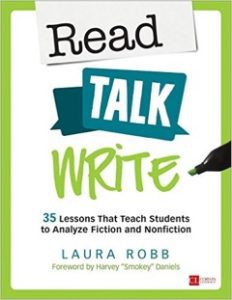
![]()

